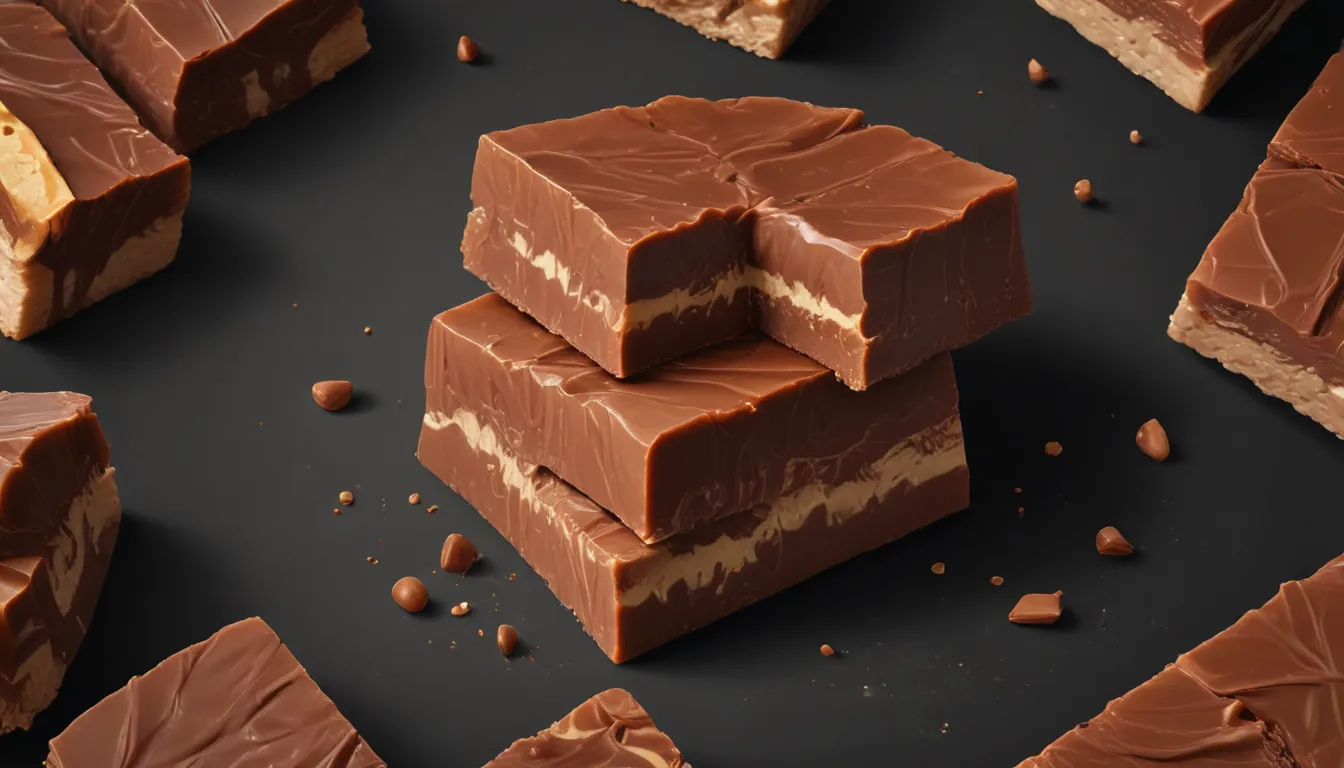The pictures in our articles might not always show exactly what the text is talking about. We use these images to make the article more interesting and eye-catching. They are there to add to the text, but not to replace it or show every detail.
Indulging in fudge is a delightful experience that brings joy to many. This rich and decadent treat has been satisfying taste buds for generations. However, before you reach for another piece of fudge, it's important to understand its nutritional value. In this article, we'll dive into the key nutrition facts about fudge to help you make informed decisions about incorporating this sweet treat into your diet. Whether you're a fudge enthusiast or simply curious about its impact on your health, read on to discover the ins and outs of fudge nutrition.
Key Takeaways
- Indulge in moderation: Enjoy fudge as part of a balanced diet for a sweet treat without overloading on calories and sugar.
- Mindful portion control: Be aware of portion sizes and savor your fudge as a delightful addition to your well-rounded diet, considering its fat, sugar, and calorie content.
Exploring the Nutritional Facts of Fudge
Calories
Fudge is calorie-dense, with a 1-ounce serving containing approximately 120-150 calories, depending on the recipe and ingredients used.
Fat Content
On average, fudge is high in fat, with about 5-8 grams per serving. The type of fat used, whether it's butter or heavy cream, can impact the overall fat content of the fudge.
Sugar Rush
Sugar is a key ingredient in fudge, with a single serving containing around 20-25 grams of sugar, adding to its sweet and tempting nature.
Protein Power
Fudge is not a significant source of protein, providing only about 1 gram per serving. However, it can still be enjoyed in moderation as part of a balanced diet.
Calcium Boost
Some fudge recipes include ingredients like condensed milk, which can contribute a small amount of calcium to the treat, enhancing your daily intake.
Vitamin Potential
While fudge is not a major source of vitamins, certain variations may contain ingredients like nuts, which add a small amount of vitamin E and B vitamins to the mix.
Sodium Content
Fudge typically has a minimal amount of sodium, ranging from 20-50 milligrams per serving, depending on the recipe. Monitoring overall sodium intake is still important.
Fiber Factor
Fudge is not a significant source of dietary fiber and should be enjoyed in moderation alongside fiber-rich foods to maintain a balanced diet.
Iron Infusion
Although fudge is not a notable source of iron, certain variations that include ingredients like cocoa powder can contribute a small amount to your daily iron intake.
Micronutrient Variety
Depending on the recipe, fudge may contain small amounts of other micronutrients. Ingredients like nuts or dried fruits can add extra minerals and antioxidants to the mix.
Mindful Indulgence: Enjoying Fudge in Moderation
Enjoying fudge in moderation is key to savoring its rich flavor without overloading on calories and sugar. By being mindful of portion sizes and incorporating fudge into a well-rounded diet, you can satisfy your sweet tooth while considering your overall health and wellness.
Conclusion
In conclusion, fudge can be a delightful treat that brings joy to many. While it's high in calories, sugar, and fat, fudge can still be enjoyed in moderation as part of a balanced diet. If you're looking to include fudge in your eating habits without overindulging, consider opting for smaller portions or exploring healthier alternatives. Remember, listening to your body and enjoying fudge as an occasional treat can enhance your overall well-being.
FAQs
- Is fudge high in calories?
-
Yes, fudge is generally high in calories due to its sugar and fat content, with a small piece containing around 100-150 calories.
-
Does fudge contain a lot of sugar?
-
Fudge is typically made with large amounts of sugar, varying in content depending on the recipe.
-
Can I find healthier versions of fudge?
-
Absolutely! There are healthier alternatives to traditional fudge that use ingredients like dates, nuts, and nut butters to achieve a similar flavor with reduced sugar and fat content.
-
Can fudge be part of a balanced diet?
-
Yes, fudge can be enjoyed in moderation as part of a balanced diet, emphasizing portion sizes and occasional indulgence.
-
Can I make my own fudge at home?
- Yes, making homemade fudge allows you to control the ingredients and adjust sugar and fat levels. Numerous recipes for healthier fudge alternatives are available online.
Unraveling the fascinating facts about fudge's nutritional profile can elevate your appreciation for this classic confection. Remember, balance is the key to guilt-free enjoyment of life's sweet moments. Enjoy exploring the mouthwatering insights into chocolate fudge and make conscious choices that align with your health and wellness goals.






